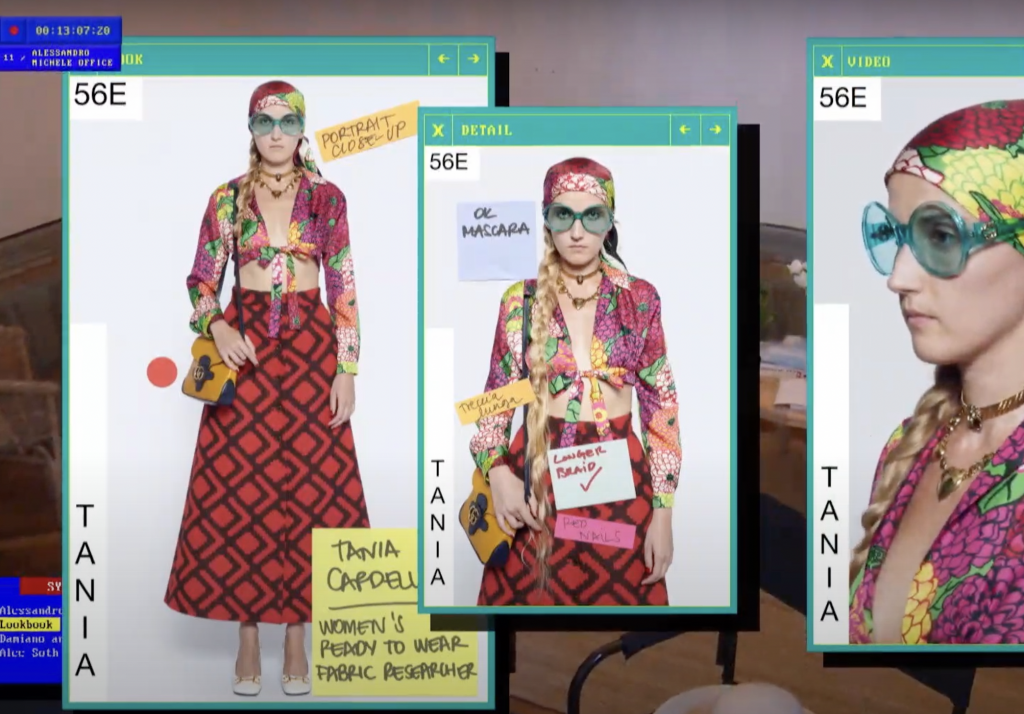The fear of missing out in the midst of renewed COVID-19 lockdowns and travel restrictions has become very real, especially for brands that have hesitated to appropriately invest in online operations in the past. Many luxury names have room for growth when it comes to e-commerce and digital experiences, with their preference for brick-and-mortar over e-commerce sales largely dictating their operations to date. Although some physical retail operations have resumed amid the various stages of reopening over the past several months, and resulted in “favorable momentum” for brands like Hermès and the ones that fall under LVMH’s umbrella, there is still lingering uncertainty about what is to come, and particularly given repeated warnings that there will be no return to the “old normal” for the foreseeable future.
In the midst of a new era for consumers and businesses, alike, brands are being forced to acknowledge that technology will play a key role in staying afloat. Some have explored creative ways to engage consumers in a digital capacity. LVMH-owned brand Loewe, for instance, debuted a series of digital events called Loewe En Casa last year, while Prada launched a series of “digital talks” on Instagram aimed at “exploring culture, fashion, and life.” Brands like Alexander McQueen and Chanel got busy compiling and offering up playlists tied to their fashion show soundtracks, while others have taken a practical approach and accelerated the implementation of e-payment solutions, with many more attempting to build an online brand presence to maximize their reach over consumers in this “contactless” world.
In light of current trends, including the total digitization of fashion weeks – the Fédération de la Haute Couture et de la Mode, which is the French fashion’s regulatory body, for instance, announced that “this month’s Paris men’s and haute couture shows will be strictly audience-free over coronavirus fears,” the AP reported on Tuesday, noting that “houses can still organize ‘real’ runway shows with models broadcast live, provided that their events take place behind closed doors” – some strategies are worth addressing for brands that are looking to digitize and/or place more emphasis on their online presence going forward …
Consumer-centric brand image
The world is changing and so must a brand’s strategy. At a time when health and safety are threatened, luxury and status may no longer be at the forefront of consumers’ minds. The average person now spends more time at home, taking advantage of the convenience of having their shopping, work and social activities done online. A good branding strategy should be sensitive to the shift in consumer habits, and position itself to capitalize on these new trends. Rex Briggs, founder of American marketing measurement and optimization firm Marketing Evolution, gave an example of consumer-sensitive rebranding for a luxury car company. Against the backdrop of the COVID-19 pandemic, he opined that it would be prudent to shift away from a status-oriented marketing strategy, and instead promote the car as a way for families to get home safely.
A similar balancing of values almost certainly applies for fashion brands. Indeed, it is a delicate balance to strike between capitalizing on opportunities for brand promotion and being sensitive to consumer sentiment. Gaming company Razer recently drew flak from consumers for requiring customers to sign up for its mobile e-wallet application as a pre-condition to claiming free masks from its vending machines. What started out as an act of service to the community was thereby spun into a tale of commercial opportunism.
In this climate where online criticisms are often louder and harsher than in reality, brands need to tread carefully to avoid becoming the subject of negative publicity.
Consumer safety & convenience
With a paradigm shift underway when it comes to ordinary lifestyles, brands also need to rethink their business models to take into account consumers’ needs and wants in this time of uncertainty. It appears that basic needs – such as safety and convenience – have become increasingly important to the average individual, and brands should leverage this where ever possible.
Businesses that have traditionally relied upon brick-and-mortar shops have opted to do away with them (for the time being, at least) in favor of marketing their products and services entirely via online platforms. Large-scale events, including the various fashion weeks, have largely migrated online, with runway shows – from Dior and Valentino’s Fall/Winter 2020 couture shows to Gucci’s latest resort offerings –being broadcast to viewers over livestream. When rapper Travis Scott become unable to stage a physical concert, he opted to collaborate with game developer Epic Games to host a live in-game concert, complete with a virtual stage and graphic effects.
Besides online events, the need for social distancing has also brought about the advent of contactless solutions. For certain industries, it may not possible to shift their operations completely online because of the nature of the product and/or services provided. Nonetheless, it remains important that physical contact is minimized so that consumers can have a peace of mind about their health and safety, which will be one of the new drivers of a luxury experience.
Still yet, the pandemic has greatly accelerated the implementation of e-payment solutions in retail outlets, especially for stores that remained open as “essential services” during the lockdowns. Industries, such as car sales, have gone one step further to implement contactless sales, servicing and test drives. Pick-ups and drop-offs of vehicles are pre-arranged, with the keys left inside the car at a particular location and time. Consultations and discussions are also conducted via video-conferencing.
The lack of physical interaction may have been unthinkable prior to the COVID-19 crisis, but is now generally accepted as a precautionary measure towards managing the spread of the virus.
Protect your intangible assets
With significant investments in brand promotion and digital solutions, as well as the increased amount of digital content being created and used, it is important that businesses protect the intangible assets created as result of these ventures. The migration to the virtual world is likely to render businesses more susceptible to piracy. Now more than ever, it is also become easier for third parties to misrepresent their offerings as authentic and/or originating from another, more reputable brand, simply by replicating the look-and-feel of that other brand’s outreach channels. The potential of the internet to spread (mis)information directly translates into a heightened risk of brand dilution and passing off.
Businesses should proactively identify and protect their intellectual property. In order to do so, businesses need to identify protectable subject matter – which can exist in a multitude of content, products, services, information and other resources that a business possesses – so as to move it up the value chain as intellectual property rights. Take the example of a mobile application: from the display icon (trademark), to the graphic user interface (design), and the content published within the application (copyright) – all of these can and should be protected as part of a businesses’ intellectual property portfolio.
Further, as brands develop a more sophisticated online presence, it may also be worth investing in the protection and monitoring of “new age” internet identifiers, such as domain names, advertising words and hashtags. Securing these rights enables the owner to take effective enforcement action against unauthorized use, thereby safeguarding its economic position.
Alongside efforts to better protect these valuable intangible assets, brand owners should map out the jurisdictions where the business operates, has a presence, or where there are opportunities to further exploit their intellectual property rights. The global nature of the Internet means that there is expedited and easy access to information, products and services. Additionally, brand outreach material can potentially be accessed and copied from anywhere in the world. Unfortunately, obtaining adequate and proper legal protection takes time, particularly in comparison to the speed of commerce. Intellectual property rights are also territorial, meaning that protection for these assets must be sought in individual countries of operation.
While it may be ideal to achieve 100 percent coverage across the globe, a brand’s protection strategy should be balanced against costs and the need to preserve financial headroom in these uncertain times. A practical approach would be to prioritize protection in key markets, and progressively increase the scope of protection as the brand grows.
Diversifying revenue streams
A robust intellectual property portfolio enhances the value proposition of a business in the eyes of investors and partners, bringing greater opportunities for collaboration and diversification into alternative revenue streams. Solutions that look beyond the traditional business model and a brand’s most immediate market segment, for example, are particularly important in times of economic downturn, to enhance business resilience and mitigate the impact of losses in specific industries – e.g. aviation, tourism, arts, and culture.
While conglomerate-owned brands benefit from such diversification (and pure scale) by virtue of the structure and reach of their parent, others need to find ways to leverage their brand assets to reach consumers in the COVID-19 market and after. This can be achieved by entering into collaborations with third parties to develop novel offerings. It may be useful to provide these offerings under a sub-brand. Sub-branding allows for the creation of a fresh brand story that resonates with consumers, while reinforcing loyalty and trust for the parent brand. Businesses need to think creatively and act with agility to revamp business offerings so that they remain relevant to the demands of the times.
To derive maximum value from any diversification-centric arrangements, businesses should be disciplined about protecting their existing and future intellectual property assets. These are valuable resources that can be monetized and exploited as part of a long-term growth strategy for the business.
Gene Kwek is a managing counsel in Bird & Bird’s Intellectual Property Group in Singapore.
Lorraine Anne Tay is the joint managing partner of Bird & Bird ATMD and head of the Intellectual Property Group in Singapore. (Intro courtesy of TFL)











